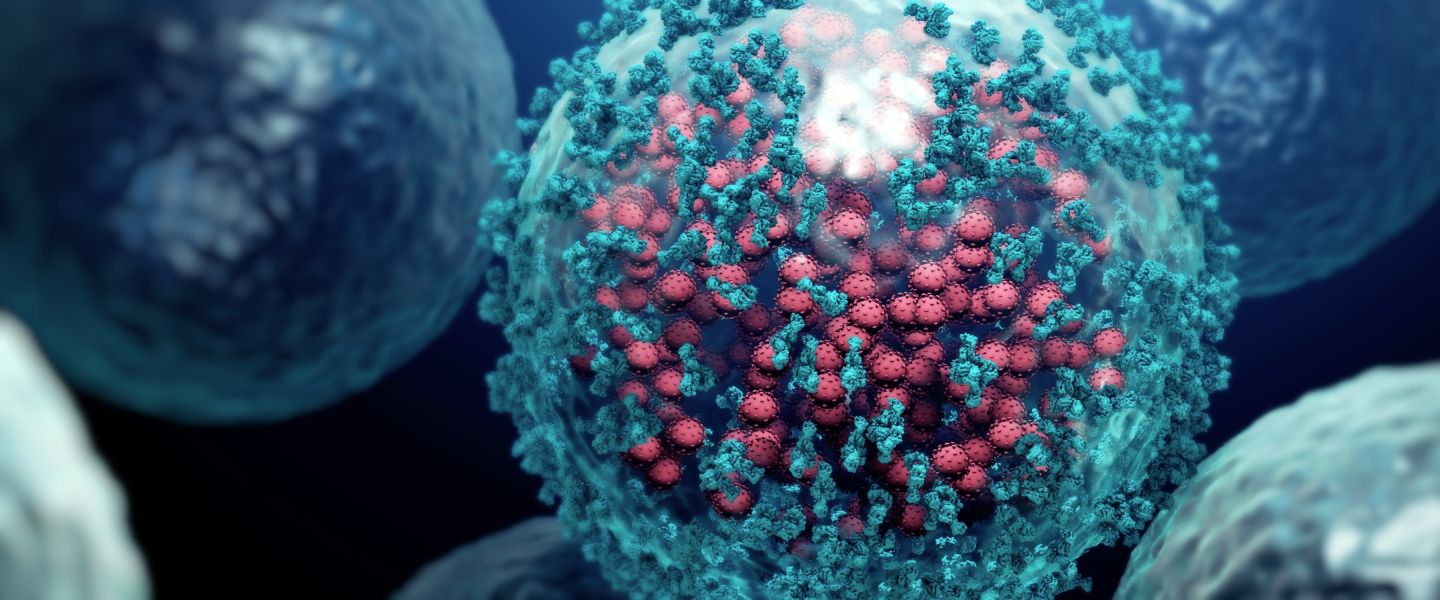SHARING / REPOSTING GUIDELINES: We're very happy to have posts/articles shared as direct links.
However, if you are replicating and re-posting information from this website or our posts, Abbey requests that you:
A) Only ever share articles in part (not in full). (eg. You can lift a paragraph as a way of introducing your readers to the topic) B) Be sure to always provide a direct link/URL back to the full original article here on the MyHealingCommunity.com website. Thanks in advance for your co-operation when sharing and re-posting any and all information that appears on this website.
Piperlongumine generates ROS to assist the kill phase of cancer treatments.
Piperlongumine is an amide alkaloid found in the fruits of the long pepper plant. It has long been used for culinary purposes and in Ayurvedic medicine to treat various illnesses, including cancer.
In vivo, Piperlongumine caused a reduction in pancreatic cancer tumour growth in a xenograft mouse model. Tumours from the Piperlongumine-treated animals showed decreased Ki-67 and increased 8-OHdG expression, suggesting Piperlongumine inhibited tumour cell proliferation and enhanced oxidative stress.
Increasingly being used as a chemo-sensitiser and radio-sensitiser, Piperlongumine enhances the sensitivity of cancer cells to commonly used chemotherapy drugs, radiation and the cancer stem cell targeting protocols being used by many patients alongside, and after the standard of care protocols.
Piperlongumine inhibits many drugs from converting into less effective metabolites whilst simultaneously reducing the activity of cancer stem cells. Here you can view a paper in which Table Two, outlines the chemo-sensitising potential of Piperlongumine.
If you are taking any medications or supplements at all, it's crucial to consult with a healthcare professional before using Piperlongumine.
Piperlongumine control cancer stem cell signalling pathways and pathogens whilst inhibiting glycolysis better than 2-DG.
Considerations and Sourcing
The anti-cancer role of Piperlongumine in various malignancies has been looked into both in vitro and in vivo. In vivo, Piperlongumine nanoparticles (2.5-5 mg/kg) suppressed tumour growth of non-small cell lung cancer in a xenograft mice model, dose-dependently, via inhibition of the NF-κB signalling pathway. Much research points to the fact that it is under hypoxic (low oxygen) conditions that Piperlongumine's superpowers are strongest.
What's even more wonderful is that Piperlongumine has been found to upregulate FBP1, inhibiting HIF1α. Cell signalling pathways such as PI3K/Akt/ mTOR, NF-κB, JAK/STAT3 and ERK are all inhibited by Piperlongumine. Research implies Piperlongumine could tackle many key hallmarks of cancer like survival, proliferation, migration, EMT, metastasis and angiogenesis.
Piperlongumine might also be able to address complex issues such as pathogenic, fungal and microbial infections alongside chemo and radiotherapy resistance - all major obstructions that often impede present treatments.
Piperlongumine has been effective against many human cancer cell lines, including but not limited to those found in leukaemia, lymphoma, melanoma, glioblastoma, head and neck, oral, pancreatic, cervical, ovarian, breast, colon, liver, lung, prostate and thyroid.
In the field of cancer research, Survivin is considered to be the strongest anti-apoptosis protein, known for its ability to control cell division and prevent apoptosis. Its over-expression has been linked with chemoresistance and poor survival rates in patients with epithelial ovarian cancer (EOC). This study found Piperlongumine can induce apoptosis and work in synergy with cisplatin or paclitaxel in human ovarian cancer cells in vitro.
For more information on a specific cancer type or treatment, refer to PubMed and be sure to check out the article 'The promising potential of piperlongumine as an emerging therapeutics for cancer'.
Considerations if Choosing to Supplement with Piperlongumine
Piperlongumine has the power to hinder specific enzymes in the liver and intestine responsible for breaking down various drugs and herbal compounds. This inhibition can lead to an increase in absorption and bioavailability of the substances. Piperlongumine strongly inhibits enzymes like CYP450 and UDP-glucuronosyltransferases (UGTs), which are crucial in breaking down and eliminating drugs and some natural anti-cancer compounds from the body. This inhibition can lead to increased natural compound and drug levels alongside prolonged effects and this is why it's important to speak to your doctor before adding Piperlongumine to a cancer stem cell targeted protocol.
It's main super power appears to be it's produce oxidative stress, especially in the new bio-available liposomal formula. It's important to avoid antioxidants that may interfere with the oxidative stress such NAC, Vit E, Glutathione, and Oral Vitamin C for about 5 days prior and after the kill phase. During the kill phase Artemisinin, high dose IV- Vitamin C, Silver Hydrosol, DCA, Fenbendazole, Omega-3, and Retinoic Acid (Accutane) increase the generation of oxidative stress alongside the Piperlongumine.
There are other off-label drugs and supplements many cancer patients take daily that are simply neutral, meaning they should be fine during an oxidative stress-induced kill-phase. Some of the neutral items include Vitamin D + K2, TUDCA, Thiamin B1, Milk Thistle, Serrapeptase, Probiotics, PECTASOL Modified Citrus Pectin, PEA, Magnesium Threonate, Low Dose Naltrexone (LDN), Fulvic Acid, Feverfew, Digestive Enzymes, Cimitadine and Caprylic Acid.
Most integrative oncologists, naturopathic oncologists and GPs trained in the metabolic approach will advise their patients individually as to whether to continue or pause for 1-2 days prior and 1-2 days after a kill phase when patients are taking powerful anti-cancer compounds such as Liposomal Berberine, Curcumin, EGCG, Quercetin w Bromelian, Liposomal Honokiol, Liposomal Bacalein, Liposomal Betulinic Acid and Danshen (Salvia Miltiorrhiza).
Many critical factors need careful consideration on an individual basis when strongly up-regulating oxidative stress levels in the human body whilst simultaneously inhibiting enzymes that detox many of these drugs and compounds. Certain drugs' effects on an individual, as well as their vulnerability to toxins, can be predicted through the use of SNPs. Speak to your practitioner about ordering a SNP's test which will help you make informed choices regarding the introduction and frequency of prolonged oxidative stress phases within the broader game plan. Before jumping from one kill phase to another, a dead cell clean-up and recovery phase supports the heart, liver, kidneys and immune system. In his latest book, Cancer Unravelled, McKinney writes that the saponins in herbs such as astragalus and ginseng help fragment dead cancer cells into antigens that can be presented to dendritic and other immune cells." Clever little saponins working for us post-kill-phase. Pro-resolving mediators alongside Boswellia with high AKBA content may help lower inflammation whilst simultaneously inhibiting methionine which may keep glutathione levels a little lower and prime the cells for the next oxidative stress phase.
So just a recap. Piperlongumine increases ROS accumulation inside cancer cells and normal cells and turns off Glutathione's antioxidant-making capacity (in all cells). Like all strategies that increase ROS, we need to figure out our own sweet spot that balances the risk of damage to healthy cells and the degree of damage to cancer stem cells. We must always clean up our dead cells and give our organs and immune system time to recover after and between heavy hitting with prolonged and enhanced oxidative stress.
Sourcing Regular and Liposomal Piperlongumine
Long pepper will increase the absorption and bioavailability of other substances and support the digestive and immune system. Even though it's not the strongest of the two options, remember to speak with your doctor, go carefully, and take notes about the other compounds and drugs you are taking simultaneously.
For Piperlongumine, a liposomal piperlongumine can be used in a pulse fashion either by itself or alongside a standard long pepper capsule during a cancer kill phase. A Pro Liposomal Piperlongumine formula has the capacity to enter the cells via liposomal delivery and, once inside, has the potential to inhibit a number of cancer stem cell pathways glycolysis, generate powerful ROS and inhibit glutathione as a part of a kill-phase.
Piperlongumine is a powerful senolytic compound.
Piperlongumine supports Ferroptosis
* MCS offers ULTRAFAST WORLDWIDE SHIPPING with FedEx and UPS
** MCS are a SOCIAL ENTERPRISE - see the We Donate 50% program
References
Dhillon, H., Chikara, S., & Reindl, K. M. (2013). Piperlongumine induces pancreatic cancer cell death by enhancing reactive oxygen species and DNA damage. Toxicology Reports, 1, 309-318. https://doi.org/10.1016/j.toxrep.2014.05.011
Li-Hua Gong, Xiu-Xiu Chen, Huan Wang, Qi-Wei Jiang, Shi-Shi Pan, Jian-Ge Qiu, Xiao-Long Mei, You-Qiu Xue, Wu-Ming Qin, Fei-Yun Zheng, Zhi Shi, Xiao-Jian Yan, "Piperlongumine Induces Apoptosis and Synergizes with Cisplatin or Paclitaxel in Human Ovarian Cancer Cells", Oxidative Medicine and Cellular Longevity, vol. 2014, Article ID 906804, 10 pages, 2014. https://doi.org/10.1155/2014/906804
Mgbeahuruike, E. E., Stålnacke, M., Vuorela, H., & Holm, Y. (2019). Antimicrobial and Synergistic Effects of Commercial Piperine and Piperlongumine in Combination with Conventional Antimicrobials. Antibiotics, 8(2), 55. https://doi.org/10.3390/antibiotics8020055
Singh, P., Sen, K., Sa, P., Khuntia, A., Raghav, S. K., Swain, R. K., & Sahoo, S. K. (2023). Piperlongumine based nanomedicine impairs glycolytic metabolism in triple-negative breast cancer stem cells through modulation of GAPDH & FBP1. Phytomedicine, 155181. https://doi.org/10.1016/j.phymed.2023.155181
Tripathi, S. K., & Biswal, B. K. (2020). Piperlongumine, a potent anticancer phytotherapeutic: Perspectives on contemporary status and future possibilities as an anticancer agent. Pharmacological Research, 156, 104772. https://doi.org/10.1016/j.phrs.2020.104772
Wang, H., Wang, Y., Gao, H., Wang, B., Dou, L., & Li, Y. (2018). Piperlongumine induces apoptosis and autophagy in leukemic cells through targeting the PI3K/Akt/mTOR and p38 signaling pathways. Oncology Letters, 15, 1423-1428. https://doi.org/10.3892/ol.2017.7498
Xu, W. H., & Li, X. C. (2011). Antifungal Compounds from Piper Species. Current bioactive compounds, 7(4), 10.2174/157340711798375822. https://doi.org/10.2174/157340711798375822
Zheng, J., Son, D. J., Gu, S. M., Woo, J. R., Ham, Y. W., Lee, H. P., Kim, W. J., Jung, J. K., & Hong, J. T. (2016). Piperlongumine inhibits lung tumor growth via inhibition of nuclear factor kappa B signaling pathway. Scientific reports, 6, 26357. https://doi.org/10.1038/srep26357
DISCLAIMER: Any and all information in this post was gathered from published research in cell lines or animals, or from typical clinical use. It may not be complete, may not have not been verified in humans, and is NOT meant or given as medical advice, but only as a guide to further exploration.









